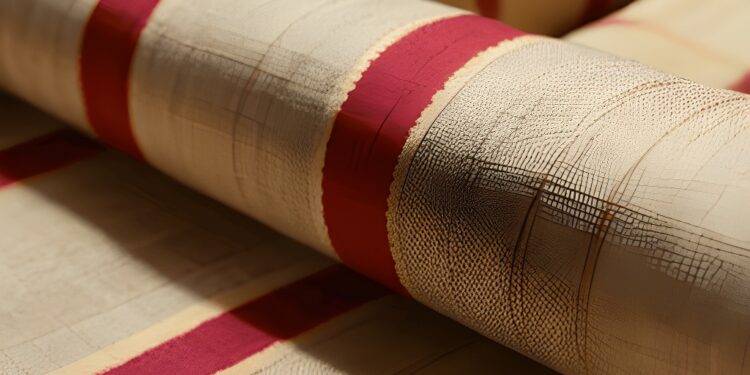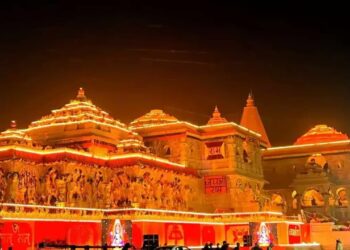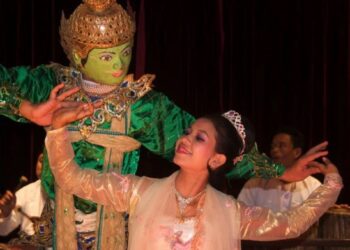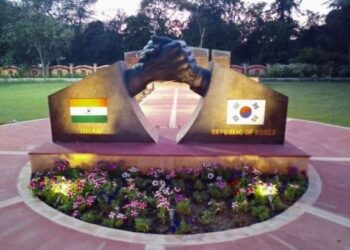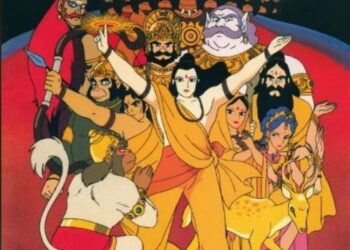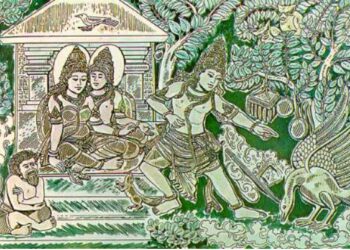Khadi, a fabric that is synonymous with India’s rich exclusive heritage and the iconic independence struggle, has experienced a remarkable transformation in recent years. Under the visionary leadership of Prime Minister Narendra Modi, the government has undertaken a series of strategic initiatives to rebrand Khadi as a fashion fabric.
These efforts have not only breathed new life into the Khadi industry but have also established it as a sustainable and fashionable choice for consumers, both within India and on the international platform. This article delves deeper into the government’s initiatives, the impact on the Khadi industry, and the increasing popularity of Khadi as a symbol of a self-reliant India.
The Rebranding Initiatives
The government’s efforts to reposition Khadi as a fashionable fabric are outlined in the following rebranding initiatives:
Financial Assistance to Khadi Weavers and Manufacturers
Recognizing the importance of Khadi as a driver of rural employment and empowerment, the Modi government extended financial support to Khadi weavers and manufacturers. This boost in financial aid enabled them to enhance their production capacity, upgrade machinery, and improve the quality of their products. As a result, the Khadi industry witnessed a surge in productivity and competitiveness.
Fashion Shows and Exhibitions
To showcase Khadi’s versatility and modern appeal, the government organized high-profile fashion shows and exhibitions featuring contemporary Khadi garments. These events, often graced by celebrities and influential personalities, have effectively changed the perception of Khadi from a traditional fabric to a trendy and fashionable choice. Designers have incorporated Khadi into their collections, presenting it as a fabric suitable for all occasions, from casual wear to haute couture.
Celebrity Endorsements
Appointing prominent figures from the entertainment, fashion, and sports industries as brand ambassadors to promote Khadi has played a crucial role in attracting the attention of younger consumers. With these influential personalities donning Khadi ensembles at public events and on social media, the fabric has gained widespread popularity as a symbol of style and ethical fashion. This celebrity endorsement has significantly contributed to making Khadi a part of mainstream fashion conversations.
Khadi-Branded Products
The government’s initiative to launch a range of Khadi-branded products, including handbags, wallets, and accessories, has further increased the fabric’s appeal to modern consumers. These products not only cater to fashion enthusiasts but also align with the government’s ‘Vocal for Local’ campaign, promoting locally-made goods and fostering entrepreneurship. The diversification of Khadi products has widened its consumer base, encompassing individuals from various age groups and walks of life.
Khadi Knowledge Portal (KPP)
The Center of Excellence for Khadi (CoEK) has set up the Khadi Knowledge Portal (KPP) to enable Khadi institutions and artisans to exchange designs and specifications, empowering them with creative and innovative ideas. Additionally, through capacity building workshops organized by CoEK, Khadi weavers have improved their skillset, resulting in higher-quality products and increased earning opportunities.
Impact on the Khadi Industry
The government’s rebranding efforts have had a significant impact on the Khadi industry:
Increased Demand and Production
As a direct consequence of the initiatives taken by the government, the number of Khadi weavers has increased, and there has been a substantial surge in demand for Khadi garments. This increase in demand has resulted in enhanced production and sales, thereby benefiting Khadi weavers and manufacturers, who now enjoy more stable livelihoods.
Change in Consumer Perception
By promoting Khadi as a fashionable and sustainable fabric, the government has successfully altered the perception of Khadi among consumers. The fabric is now seen as a symbol of modernity, making it appealing to the younger generation seeking eco-friendly and ethical fashion choices. As conscious consumerism gains traction, Khadi has emerged as a responsible fashion option that celebrates India’s cultural heritage.
Boost to Rural Economy
Khadi has become a powerful medium of change in the lives of the poor, particularly those in rural areas. The government’s emphasis on purchasing Khadi products has not only improved the livelihoods of weavers but has also strengthened the rural economy. By providing steady employment and fair wages, Khadi has contributed to poverty alleviation and rural development.
Empowering Women
A significant aspect of Khadi’s resurgence is the empowerment of women weavers. The government’s initiatives have encouraged women to take up Khadi weaving as a means of economic independence and self-sufficiency. Khadi has become a platform for women to showcase their artistic skills and creativity, enabling them to contribute meaningfully to their families and communities.
Khadi’s Global Presence
Under Prime Minister Modi’s leadership, Khadi has emerged as a prominent player in the global fashion industry. Its recognition internationally as a symbol of India’s rich cultural heritage and commitment to sustainability has further boosted its appeal among global consumers. In international fashion events and exhibitions, Khadi has found its place among other globally celebrated fabrics, elevating India’s status as a fashion destination.
The revival of Khadi as a fashion fabric stands as a testament to the government’s commitment to building a self-reliant India. The Prime Minister’s emphasis on “Mann Ki Baat” and encouraging citizens to buy Khadi products has led to a substantial increase in sales and international recognition. By supporting Khadi, Indians actively participate in promoting local industries and sustainable practices, contributing to the vision of a self-reliant and prosperous India.
In addition to the government’s initiatives, Khadi has seen a surge in demand from eco-conscious consumers worldwide. As the fashion industry embraces sustainable practices, Khadi’s eco-friendly and biodegradable nature has garnered attention from global designers and consumers seeking ethical fashion alternatives. The fabric’s unique texture, natural hues, and adaptability have captured the imagination of international fashion houses, leading to collaborations and inclusion in prestigious fashion events.
Khadi’s transformation from a symbol of India’s independence struggle to a fashionable fabric is a remarkable journey. The Modi government’s strategic initiatives have successfully rebranded Khadi, positioning it as a sustainable and stylish choice for fashion-conscious consumers.
As Khadi continues to thrive, it not only contributes to the growth of the Indian economy but also embodies the essence of a self-reliant India, rooted in its rich cultural heritage and traditions. With the world increasingly seeking ethical and eco-friendly fashion, Khadi is set to shine on the global stage, carrying forward its legacy as a fabric of pride for generations to come.

